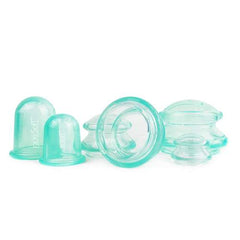Silicone cupping is still a relatively new phenomenon, having been ushered into popularity via Michael Phelps’ appearance at the Olympics. With what appeared to be round deep purple bruises across is back and shoulders, pictures of Phelps swept the Internet. Not only did it look strange but it created a lot of questions. As it turned out, those marks all came from cupping therapy.
What is silicone cupping? Cupping’s a type of massage therapy expect instead of pressing downwards to create release, suction is used to pull the tissue upwards. Cupping’s been around for thousands of years, used in cultures ranging from the Chinese to Egyptians, Greeks, and Iranians. In the West, cupping’s been used in the past few years as a remedy to various musculoskeletal conditions.
Traditional Chinese medicine philosophizes cupping as a way to facilitate ‘qi’ or energy flow in the body. Physically, the sensation is quite odd to feel the first time. It essentially vacuums a person’s skin. The result is the release of stagnant blood and increased lymphatic drainage. Circulation increases, and more oxygen and nutrients are moved across the area being suctioned. This is how you relieve tight muscles, promote healing, and detoxify from what’s clouding up and weighing down the body’s symptoms.
There are different types of cupping out there, including using fire to create suction, using oils to facilitate wet cupping, and dry cupping as well. The cups themselves can be made out of bamboo, plastic, glass, or silicone. The easiest material to use with cups is silicone. They’re soft, pliable, and don’t require anything more to apply. Silicone’s also easy to move across the body, helping you focus on an area or to create motion across a problematic part of the body. For beginners, they may choose to go to a cupping practitioner for their first session as they can manipulate the suction and movement according to what your body needs.
Now you might be asking about those bruises or cupping marks and what those are all about. They’re not bruises. They are irritations. They’re stagnant blood that’s been pulled to the skin’s surface. Normally, these marks will disappear in minutes as blood flows back into the body. At times, spots may last longer as it can take time for the body to take back that blood.


